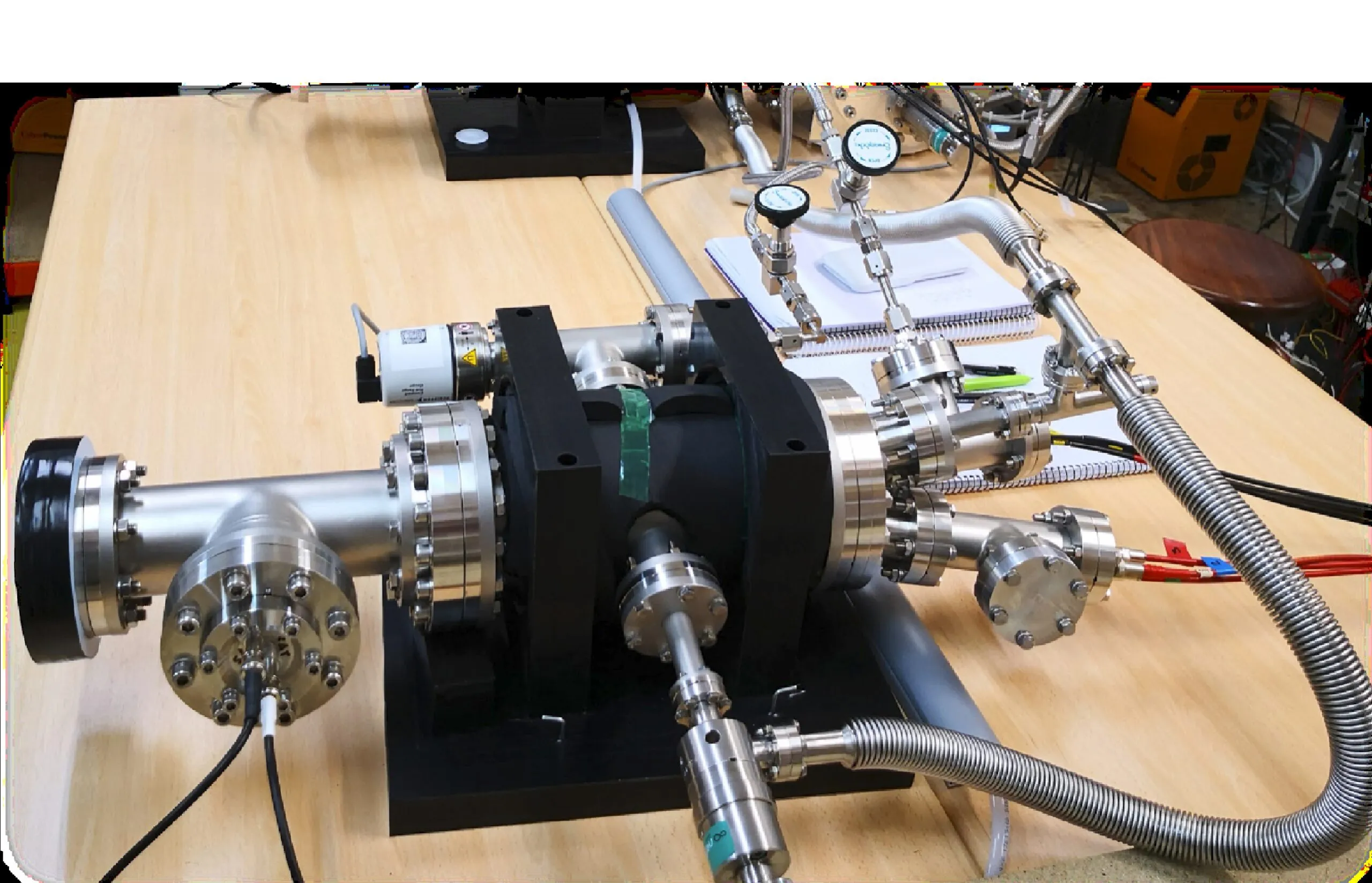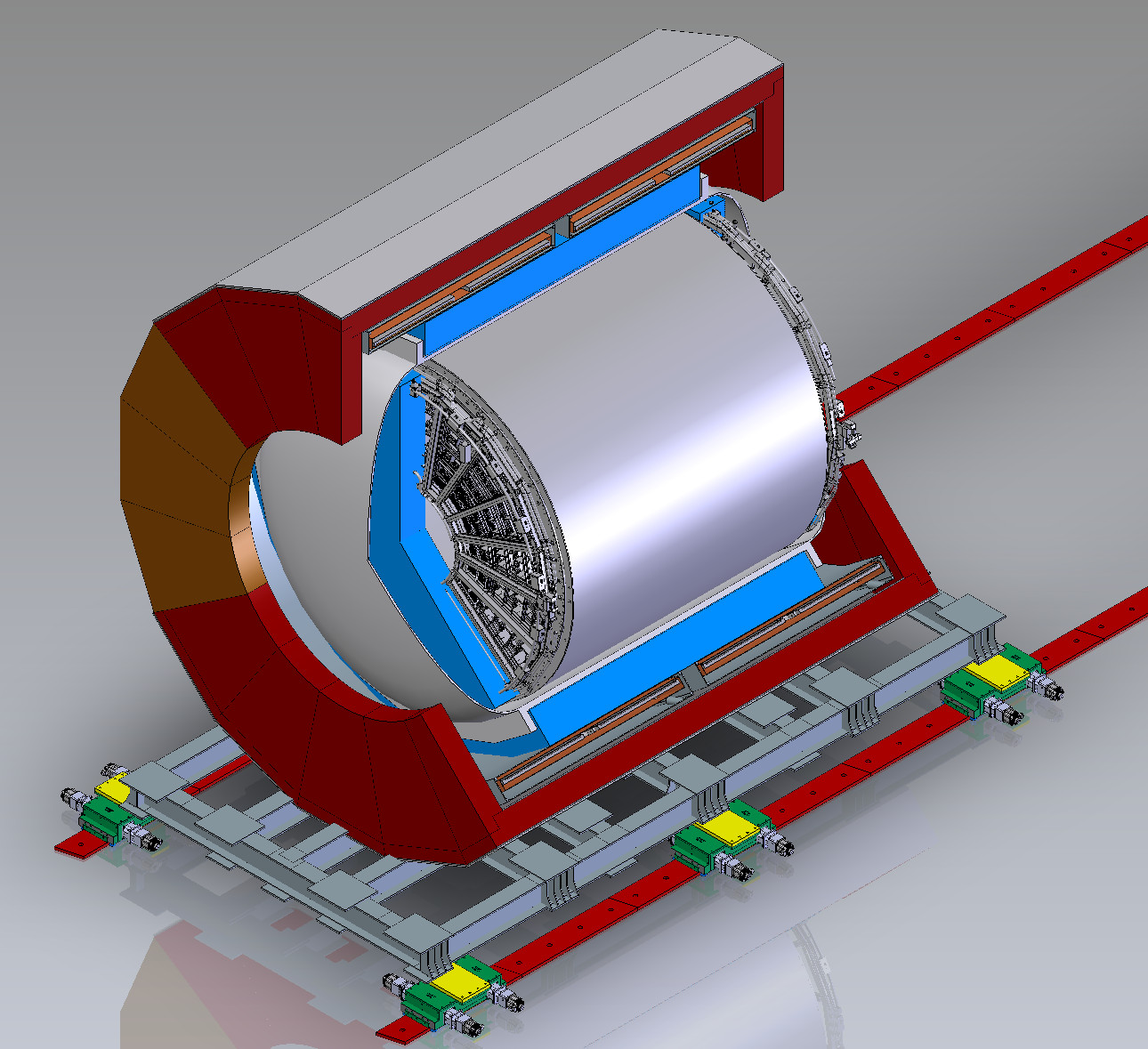O IGFAE acolle unha reunión internacional sobre desenvolvemento de espectrómetros solenoides



10.06.2021

Un equipo do Instituto Galego de Física de Altas Enerxías (IGFAE) traballa no desenvolvemento dunha nova técnica de detección para o experimento DUNE, o máis sofisticado do mundo no estudo dos neutrinos, situado entre o acelerador de partículas PIP-II, en Fermilab, e o laboratorio subterráneo de Sanford (EE. UU.). Entre os obxectivos científicos de DUNE atópase a observación, cunha precisión sen precedentes, de como os neutrinos cambian de identidade ou ‘sabor’ mentres se desprazan, o que podería axudar a explicar a asimetría observada entre a materia e antimateria no noso universo.
Os neutrinos son fantasmas extremadamente veloces do mundo subatómico. Como a súa masa é tan pequena e non teñen carga eléctrica ‒de aí o de neutrino‒ apenas interaccionan con outras partículas. De feito, son tan lixeiros e debilmente interactuantes que o mundo en que vivimos resúltalles altamente transparente. Hainos de 3 tipos ‒electrónicos, muónicos e tauónicos‒ e mentres viaxan polo espazo van mutando de identidade (‘sabor’, na xerga do campo) segundo a diferenza de masa entre eles. Determinar as propiedades dos neutrinos de forma directa é ademais moi difícil, pero existen métodos indirectos para coñecer a súa natureza e comportamento escorregadizo que poden ser claves para responder a unha das grandes cuestións actuais da física: por que hai máis materia que antimateria no universo?
Para contribuír a este obxectivo nace ND-GAr, un detector de neutrinos en cuxo deseño está a participar un equipo do IGFAE liderado polo investigador Diego González-Díaz. ND-GAr instalarase nos próximos anos nun dos maiores experimentos de neutrinos xamais construído, DUNE (Deep Underground Neutrino Experiment) do Laboratorio Nacional Fermi, próximo a Chicago. O acelerador PIP-II de Fermilab disparará protóns acelerados a case a velocidade da luz contra un branco, creando o chorro de neutrinos máis potente do mundo ata a data. Preto da fonte de neutrinos situarase o detector próximo (‘Near Detector’), onde se instalará o ND-GAr, e a 1.300 quilómetros de distancia recibiraos outro detector, o detector afastado (‘Far Detector’). Durante esa viaxe a máis dun quilómetro baixo terra, os neutrinos cambian as súas propiedades e o obxectivo de ND-GAr é contribuír á determinación, coa maior precisión ata a data, de cantos neutrinos convértense en antineutrinos durante a viaxe, e viceversa. A comunidade científica cre que, se conseguimos caracterizar suficientemente ben estas minúsculas oscilacións de neutrinos, poderemos resolver o misterio polo que cal a materia goberna sobre a antimateria no noso universo.

Esquema do Near Detector (Detector Cercano) que se instalará en DUNE e os seus distintos subcompoñentes. En vermello, a cámara TPC que está a ser deseñada por un equipo do IGFAE. Crédito: colaboración DUNE.
A clave podería estar no diferente comportamento de neutrinos e antineutrinos fronte ao fenómeno de oscilación que, no baleiro, caracterízase a través do denominado “ángulo (fase) de violación carga-paridade (CP) no sector leptónico”. Unha vez confirmado e, especialmente, cuantificado, este diferente comportamento entre neutrinos e antineutrinos, resulta posible establecer relacións teóricas entre fenómenos análogos para outras partículas/antipartículas fundamentais do Modelo Estándar de física de partículas. En particular, as súas interaccións e, en última instancia, a maneira na que a materia e antimateria creouse e destruíu durante a orixe do universo, facendo prevalecer de maneira asimétrica unha das dúas.
Tras a pegada dos neutrinos con cámaras TPC
ND-GAr é unha cámara de proxección temporal (TPC), un tipo de detector que combina campos eléctricos e magnéticos con gases ricos en argón no caso de DUNE, permitindo así reconstruír en 3D a traxectoria das partículas producidas nas interaccións dos neutrinos. O equipo do IGFAE está a deseñar un método para ler a escintilación ou brillo inicial que se produce cando o feixe de neutrinos interacciona co gas do detector. Isto permitirá suprimir eventos que non estean asociados co feixe de neutrinos, así como mellorar a reconstrución das partículas cargadas emerxentes. En concreto, mellorará a estimación da enerxía e o ángulo de dispersión dos neutróns e raios-gamma que se producen en interaccións de ‘corrente neutra’, un tipo de interacción do neutrino que presenta unhas características de reconstrución especialmente complicadas e que por iso está moito menos estudada ata a data.

Esquema do ND-GAr, mostrando a cámara TPC (HPgTPC), rodeada do calorímetro electromagnético (ECAL). Crédito: colaboración DUNE.
“Un aspecto particularmente interesante deste proxecto é que agora estamos a empezar a comprender o potencial do detector para reconstruír partículas producidas en conxunción co feixe de neutrinos e preditas en diferentes extensións do Modelo Estándar”, sinala Diego González-Díaz, coordinador do proxecto. “Para conseguilo é esencial poder obter o tempo da interacción, e a detección en fase gasosa representa significativas melloras en comparación con outras técnicas existentes”.
“Aínda necesitamos comprender mellor os aspectos técnicos, pero a demostración experimental da existencia dunha mestura de gas fortemente centeladora a 10 atmosferas de presión, xunto coa estabilidade operacional dun mini ND-GAr construído no IGFAE, marcou un antes e un despois. O traballo persistente de Pablo Amedo e Sara Leardini, estudantes de doutoramento do IGFAE, xunto con apoio técnico de David José Fernández e David González Caamaño (técnico de IGFAE) nos últimos meses foi incrible”.
Na actualidade, está a avaliarse a resposta completa da TPC para determinar de forma máis cuantitativa o impacto do sinal lumínica producida polos neutrinos ao interaccionar co gas nas diferentes canles de física. Este traballo realízase con simulacións por computador, utilizando o software Geant4 e os datos das medidas experimentais que lidera a investigadora postdoutoral do IGFAE Ángela Saa. “Este traballo tamén permitirá establecer como optimizar a lectura óptica, en particular, que sensores usar e como configuralos. O noso obxectivo é, cara a final de ano, implementar no IGFAE a tecnoloxía seleccionada para a detección de luz nun mini- ND-GAr xa de tamaño medio (20 litros). Estamos aínda moi lonxe de entender de maneira completa as novas posibilidades que se nos están abrindo, pero o horizonte científico-tecnolóxico é fascinante”, apunta Diego Gónzalez-Díaz.
Proxecto internacional con participación española
DUNE é un consorcio internacional formado por máis de 1000 científicos, 200 institucións e 30 países, onde o IGFAE participa con este proxecto no que traballan na actualidade Ángela Saa, Pablo Amedo, Sara Leardini, Miguel Morales, David José Fernández, Alberto Sánchez e David González. Ademais de numerosos colaboradores internacionais, en España conta co apoio de investigadores do Instituto de Física Corpuscular (IFIC), do Centro de Investigacións Enerxéticas, Ambientais e Tecnolóxicas (CIEMAT) e Universidade de Granada.
Este proxecto está financiado polo programa IGNITE* do IGFAE e o programa H2020 a través do proxecto AIDAinnova para o desenvolvemento e transferencia de novas tecnoloxías de detectores de partículas en Europa durante os próximos 4 anos e, en concreto, para a optimización de TPCs presurizadas de nova xeración con lectura óptica.
Referencias:
Preprint: “Deep Underground Neutrino Experiment (DUNE) Near Detector Conceptual Design Report”. DUNE Collaboration. arXiv:2103.13910v1
Imaxe principal: Mini ND-GAr, prototipo construido no IGFAE do detector ND-GAr que se instalará en DUNE. Crédito: IGFAE.